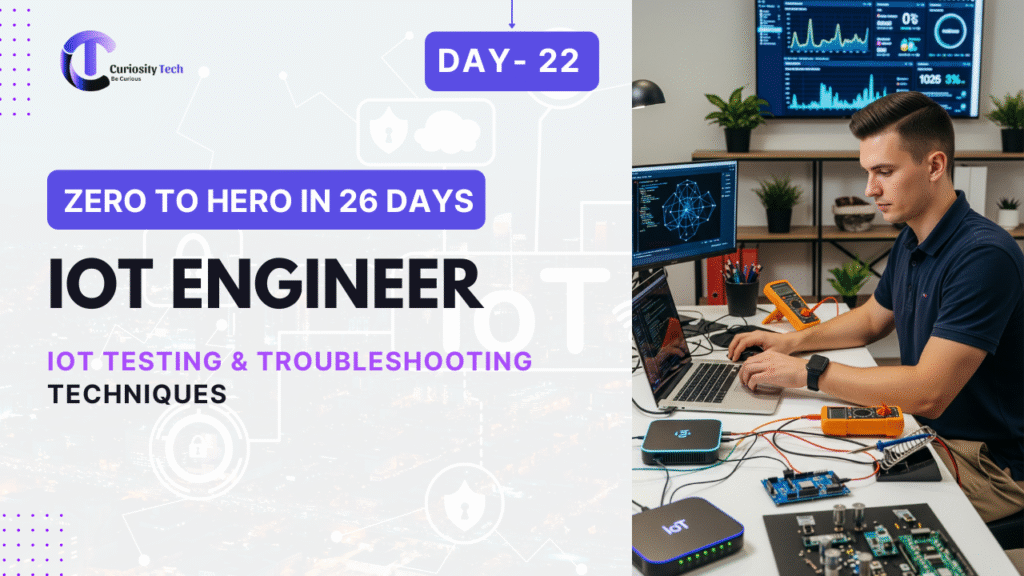Introduction
Integrating IoT devices with cloud platforms is the crucial step turning raw sensor data into scalable, analyzable insights. In 2025, enterprises and developers primarily use three major cloud IoT platforms: Amazon Web Services (AWS IoT Core), Microsoft Azure IoT Hub, and Google Cloud IoT Core coupled with their broader data and AI tools.
This comprehensive guide covers every mandatory detail on securely onboarding devices, establishing reliable data ingestion pipelines, and creating visualization dashboards in these cloud environments with practical, developer-centric steps.

Preparing for Device Cloud Onboarding
Prerequisites
- IoT device firmware that supports secure MQTT/HTTPS communication.
- Unique device identifiers (device certificates or SAS tokens).
- Cloud platform account with IoT permissions.
- Developer tools (AWS CLI, Azure CLI, gcloud SDK).
General Best Practices
- Use mutual TLS authentication wherever possible.
- Ensure devices support over-the-air (OTA) update capability.
- Prepare JSON payload formats and topic hierarchy for telemetry data.
- Plan device provisioning strategy (manual vs bulk vs Just-in-time provisioning).
AWS IoT Core Integration
Step 1: Register a Thing
- Open AWS IoT console → Manage → Things → Create Thing.
- Define Thing Type & Groups for large fleets.
Step 2: Create & Attach Certificates
- Create unique X.509 certificates per Thing.
- Attach certificate policies limiting permissions (IoT policy JSON).
- Activate certificates.
Step 3: Device Configuration
- Load certificates & private keys into device firmware.
- Program MQTT client to connect to AWS IoT endpoint using TLS.
Step 4: Create and Test MQTT Topics
- Use topic filters like device/{thingName}/telemetry.
- Publish JSON telemetry payloads:
- json
{“temperature”: 23.4, “humidity”: 45.8}
- Subscribe to control topics for device commands.
Step 5: Enable Rules Engine
- Create rules routing data from MQTT topics to AWS services (e.g., DynamoDB, Lambda, Kinesis).
Step 6: Visualize Data
- Use AWS IoT Analytics + QuickSight or third-party dashboards like Grafana connected to cloud DB.
Microsoft Azure IoT Hub Integration
Step 1: Create IoT Hub
- Go to Azure portal → Create resource → IoT Hub.
- Choose pricing tier and region.
Step 2: Register Devices
- Use Device Identity registry.
- Generate device connection strings with SAS tokens.
Step 3: Device SDK Configuration
- Use Azure IoT device SDK (C, Python, Java).
- Program devices for MQTT/AMQP connections with SAS token authentication.
Step 4: Telemetry Data
- Devices send JSON messages to Event Hub compatible interface.
- Example payload:
- json
{“deviceId”: “esp32_001”, “temperature”: 25.6}
Step 5: Stream Analytics and Routing
- Use Azure Stream Analytics jobs to filter, aggregate, and pass data to Blob Storage, SQL DB, or Azure Functions.
Step 6: Dashboarding
- Integrate with Power BI to create real-time reports and alerts based on analytic results.
Google Cloud IoT Core Integration
Step 1: Setup Cloud IoT Core Registry
- Create a registry under Google Cloud Console specifying region and protocols.
Step 2: Register Devices
- Add devices with unique public keys (RSA or ECC).
- Use JWT tokens in device firmware to establish identity.
Step 3: Device MQTT Bridge
- Connect devices over MQTT bridge endpoint using TLS.
- Publish telemetry on events topic with JSON payloads.
Step 4: Data Processing
- Use Cloud Pub/Sub subscriptions to capture telemetry.
- Stream data to BigQuery for storage and real-time queries.
- Trigger Cloud Functions for event-driven processing.
Step 5: Visualization
- Build dashboards with Looker Studio or integrate with third-party tools like Grafana.

Additional Guidance on Common Steps
- Credential Rotation: Implement automatic renewal of certificates or SAS tokens to minimize security risks.
- OTA Updates: Cloud platforms support OTA workflows; integrate device firmware to pull updates triggered by cloud messages.
- Error Handling and Reconnect Logic: Ensure devices retry connections with exponential backoff.
- Payload Compression: Use efficient encoding (CBOR, Protobuf) to minimize bandwidth in constrained environments.
Security Considerations
- Use end-to-end encrypted connections (TLS 1.3).
- Implement mutual authentication and least privilege access in policies.
- Monitor device telemetry for anomalies indicating compromised devices.
- Regularly audit device registry and permissions.
Real-World Example
At CuriosityTech.in Nagpur, students configure ESP32 devices with X.509 certificates for AWS IoT Core, publish sensor telemetry, and build a real-time dashboard in QuickSight visualizing temperature trends with alert thresholds. This hands-on experience solidifies understanding of cloud IoT integration fundamentals.
Conclusion
Successful industrial IoT projects rest on secure, scalable, and efficient cloud integration. Mastery of device onboarding, robust authentication, reliable messaging protocols, and data pipeline construction on AWS, Azure, and GCP are indispensable skills for application architects and embedded developers alike in 2025.
By combining detailed platform-specific expertise with overarching best practices outlined here, along with hands-on labs at centers like CuriosityTech.in Nagpur, engineers can efficiently deploy reliable and future-proof IIoT solutions.


